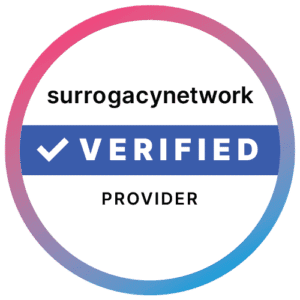In surrogacy, waiting to be matched is no easy feat. However, it seems to be taking longer than ever. Pre-pandemic, Intended Parents waited an average of six months to be matched in our program. Unfortunately, these timelines have extended to a year or more for some families. So why the wait?
Less Applicants
Since 2020, we have seen the overall number of inquiries and applicants drop dramatically. Given world events, this isn’t surprising. Gestational carriers generally have young children, and families were under major stressors managing lockdowns, virtual schooling, daycare closures, etc. Surrogacy is a significant time commitment, especially during a transfer cycle. Most carriers could not imagine adding daily injections, clinic appointments and potential travel on top of managing their own family’s needs. Even the financial compensation during pregnancy was not enough of an incentive.
More Disqualifications
Hawaii Surrogacy Center‘s program acceptance rate over the past ten years was around 30%. It has plummeted to less than 10%. We screen for both pregnancy-related disorders, as well as overall health and wellness (physical and mental). We never go by self-reporting on an application. Every carrier provides us with releases and we obtain original records from their providers directly. What conditions are we seeing a lot more of to disqualify surrogates? Hypertension, high BMI levels, gestational diabetes, anxiety and depression. As humans that have weathered this pandemic, that shouldn’t be particularly surprising.
Higher Demand
On the flip side, we fielded a record number of inquiries last year by intended parents. Our program is unique in that no agency fees are paid until a successful match occurs with a surrogate that we have already screened. There’s no deposit required to be on the wait list. Our cost-friendly approach, combined with some serious soul-searching and prioritizing on behalf of IPs to grow their families now, led to the biggest list we have ever had at a time when the availability of qualified surrogates is at an all time low.
The COVID Vaccine
Things were pretty rocky there for a bit. First the vaccine was limited in distribution. Most IPs wanted vaccinated surrogates, but we had others who explicitly asked for unvaccinated carriers. Some clinics required it, others did not (and some changed their requirements back and forth… a few times…) Some IPs didn’t know their clinical requirements, so we had go through our whole system, gather all those requirements and make sure everyone was on the same page. Have we mentioned the major vaccine hesitancy rates in women of childbearing age that is our target audience as surrogates? The upside – things are evening out and we are seeing far more vaccinated applicants this year.
Travel Stinks
Our IPs have embryos everywhere. Most are on Oahu, but they’re also often in California, Oregon, Washington and Utah. Travel is not fun right now (plus it’s super expensive). Surrogates have been asking to stay as local as possible for their cycles, so we have a lot of IPs that are sitting on the list because we can’t match them with gestational carriers that don’t want to fly out for their transfer.
Disproportionate = Picky?
Gestational carriers know they are in the position of picking from a lot of IPs because for every one qualified surrogate there’s twenty or more IPs who would love to match with her. Ten years ago, a surrogate would come into our program and say, “Match me with anyone in need!” We would look at medical preferences and personalities, and generally match her with the next person in line. Everyone was happy. Now it feels a lot like online dating with surrogates saying they want to “feel that spark” the moment they set eyes on a profile. Oof! The average surrogate is seeing at least three profiles before agreeing to an initial facilitated call/meeting. When we say to IPs “you’re at the top of your cohort,” it means that your profile will go out first to a carrier with your matching preferences. She may pass on you and look at the next family with similar preferences that came onto our waitlist a little after you did. That is why we can’t tell you your exact place in line because it isn’t a ticket queue. We honestly don’t know when a surrogate will look at your profile and say she is interested in getting to know you more. It’s about the quality of match in both directions, and right now, surrogates are in the position to pick their IPs.

Are things getting better?
Absolutely. We have seen a significant uptick in applicants and about 25% are passing our rigorous screening process. Nonetheless, it will take us time to work through waiting to be matched families. In fact, we have closed our waitlist for 2022 to focus on rapid screening, matching and case management. If you’re receiving this email, you made it onto the list, so no worries.
What can you do to get matched quicker?
Stay tuned for an upcoming newsletter about the matching process and ways to improve your chances of finding a perfect surrogate. Also, we will share what will NOT get your waiting to be matched time shorter (hint: it has nothing to do with money).




